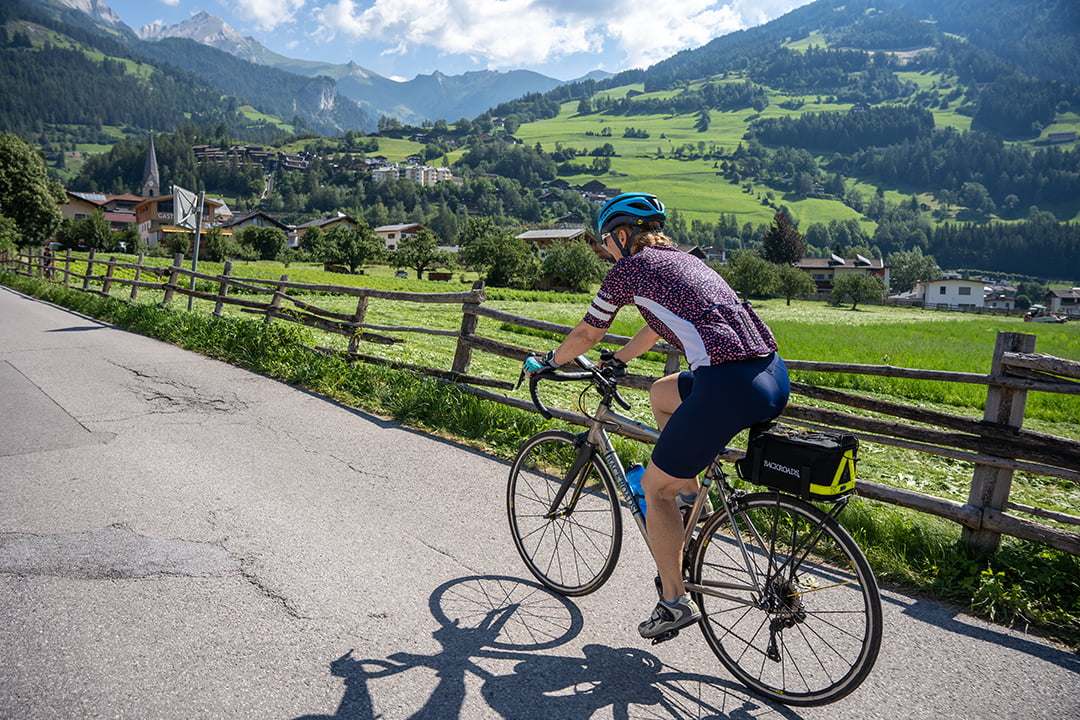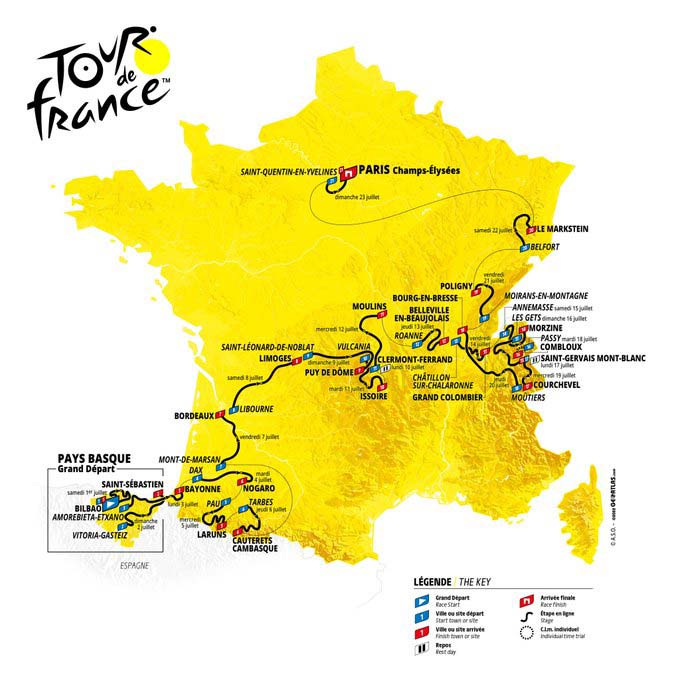The Tour De France is a renowned annual bicycle race held in France, attracting the best riders from around the world. Tour de France is of immense importance, both from a historical perspective and in terms of its prestige and global attention. This iconic race continues to captivate audiences year after year, showcasing the best of cycling and inspiring generations of athletes. Whether you’re a cycling enthusiast or not, the Tour de France is an event that cannot be ignored.

The Importance Of The Tour De France
The Tour de France is more than just a bicycle race. It is a globally renowned sporting event that captures the attention of millions of people worldwide. But why is the Tour de France so important? Let’s take a closer look:
Historical Significance
The Tour de France holds great historical significance as it is the oldest and most prestigious cycling race in the world. The race was first held in 1903 and has been an annual tradition ever since. Over the years, it has become a symbol of endurance, determination, and human achievement. Countless cycling legends have emerged from the Tour de France, and it has become a platform for showcasing the evolution of the sport and pushing its limits.
Prestige And Reputation
The Tour de France is widely regarded as the pinnacle of professional cycling. It attracts the best riders from around the globe, who compete fiercely to win the coveted yellow jersey. The race covers challenging terrains, including tough mountain stages and time trials, testing the riders’ physical and mental abilities. Winning the Tour de France is the ultimate achievement for any cyclist and can elevate their status to legendary proportions. The prestige and reputation associated with the race make it a must-watch event for cycling enthusiasts.
Global Attention
One of the distinguishing factors of the Tour de France is its ability to capture global attention. It is estimated that around 3.5 billion people tune in to watch the race each year. The event is broadcast in over 190 countries, making it one of the most widely watched sporting events in the world. This global attention not only highlights the popularity of the race but also brings people from different backgrounds and cultures together to celebrate the sport of cycling. The Tour de France also plays a significant role in promoting tourism and showcasing the beauty of the French countryside to a global audience.
Evolution Of The Tour De France
The Tour de France, one of the most prestigious and challenging bicycle races in the world, has a rich history that spans over a century. Over the years, the race has evolved in various aspects, from its origins and early years to key moments that have shaped its legacy. It has also witnessed technological advancements that have revolutionized the sport. Let’s delve into the fascinating journey of the Tour de France and explore its transformation throughout the years.
Origins And Early Years
The Tour de France was first organized in 1903 by the newspaper L’Auto as a means to boost circulation. The race was envisioned as a grand bicycle tour around France to showcase the country’s diverse landscapes and promote the newspaper. The inaugural edition comprised six stages, covering a total distance of 2,428 kilometers.
The race immediately captured the imagination of the French people, as cyclists embarked on an epic journey through mountains, plains, and cities. The event showcased the grit and determination of the riders, paving the way for future editions that would become even more demanding and iconic.
Key Moments In Tour History
The Tour de France has witnessed several key moments that have left an indelible mark on its history. These moments have shaped the race, contributed to its popularity, and inspired generations of cyclists. Some of these significant milestones include:
- First Mountain Stage: In 1910, the race introduced mountain stages, challenging the riders with grueling ascents in the Pyrenees and the Alps. The inclusion of mountains transformed the race, elevating the level of competition and pushing riders to their limits.
- Yellow Jersey Introduction: In 1919, the iconic yellow jersey, or “le maillot jaune,” was introduced to signify the race leader. This innovation allowed spectators and riders alike to easily identify the overall leader, adding a new level of excitement and drama to the event.
- Time Trials: Time trials were introduced in the 1930s, providing riders with an opportunity to showcase their skills against the clock. These stages have often been instrumental in determining the race’s outcome, intensifying the competition and adding suspense to the overall standings.
- Increased International Participation: Over the years, the Tour de France has seen a surge in international participation, attracting riders from all corners of the globe. This global presence has not only added diversity to the race but also enhanced its reputation as the ultimate test of cycling excellence.
- Electronically Timed Stages: In recent years, technological advancements have revolutionized the Tour de France. From the introduction of timekeeping devices to the use of GPS technology, these advancements have ensured accurate and fair competition, providing valuable data for analysis and strategy.
Technological Advancements
The Tour de France has embraced technological advancements, enhancing the race experience for both riders and spectators. These advancements have included:
- Carbon Fiber Bikes: The adoption of carbon fiber frames has significantly reduced the weight of bicycles, allowing for greater efficiency and speed.
- Aerodynamic Enhancements: Riders and teams invest heavily in wind tunnel testing and aerodynamic components to reduce drag and gain crucial seconds.
- Power Meters: Power meters have become essential tools for riders, providing real-time data on their effort and allowing for precise pacing and energy management.
- Live Tracking and Analysis: With the integration of live tracking systems and data analysis, viewers can now follow the race in real time and access detailed statistics and insights.
- Doping Control: The Tour de France has been at the forefront of anti-doping efforts, implementing strict testing protocols and regulations to ensure a clean and fair competition.
These technological advancements continue to push the boundaries of performance in the Tour de France, leading to faster times, closer races, and a new generation of cycling heroes.

The Ultimate Cycling Spectacle
The Tour de France is not just a cycling race, it is the ultimate cycling spectacle. Each year, it captivates millions of fans around the world, bringing together the best riders in the sport to compete in a grueling three-week challenge. From the route and stages to the challenges and obstacles faced by riders, the Tour de France is an event like no other.
The Route And Stages
The Tour de France route is carefully planned to showcase the beauty and diversity of the French countryside. It takes riders through picturesque villages, challenging mountain passes, and iconic landmarks. Each year, the route is different, offering new and exciting challenges for the riders and keeping the race fresh and unpredictable.
With a total distance of over 3,500 kilometers, the Tour de France is divided into stages, typically 21 in total. These stages vary in length and difficulty, ranging from flat sprints to punishing mountain climbs. Riders must strategize and conserve their energy throughout the race, knowing that every stage is crucial in their pursuit of victory.
Challenges And Obstacles
The Tour de France is not for the faint of heart. Riders face numerous challenges and obstacles that test their physical and mental endurance. From treacherous weather conditions to brutal climbs in the mountains, every day brings a new test for the competitors.
The high speeds, tight corners, and narrow roads add another level of difficulty to the race. Riders must navigate through chaotic pelotons, keeping a keen eye on their rivals and making split-second decisions to avoid crashes. The pressure to perform is immense, as a single mistake can cost them their chance at victory.
Impact On Riders’ Careers
The Tour de France is not just a race, it is a career-defining event for many cyclists. A strong performance in the Tour can catapult a rider’s reputation and open doors to new opportunities. It is a chance for them to shine on the world stage and prove themselves among the best in the sport.
On the other hand, a poor showing in the Tour can have a lasting impact on a rider’s career. The pressure to perform can be overwhelming, and the physical demands of the race can take a toll on even the most seasoned athletes. Stamina, resilience, and mental fortitude are key attributes needed to survive and succeed in the Tour de France.
Behind The Scenes: Organizing The Tour De France
The Tour de France is not just about the riders and the race itself. Behind the scenes, a massive effort takes place to ensure the smooth organization of this iconic cycling event. From logistics and infrastructure to security measures and sponsorship, numerous aspects need to be carefully coordinated to make the Tour de France a success.
Logistics And Infrastructure
Logistics and infrastructure play a crucial role in organizing the Tour de France. With multiple stages covering different cities and towns, a well-defined route needs to be planned, taking into account various factors such as the terrain, historical landmarks, and the scenic beauty of the regions.
The logistics team works diligently to coordinate everything from road closures and traffic management to accommodation and hospitality for the riders, teams, and officials. They ensure that the race runs smoothly by considering factors like transport, equipment, and supplies required by the teams throughout the race.
Security Measures
Ensuring the safety of riders, spectators, and the general public is a top priority for the organizers of the Tour de France. Extensive security measures are put in place to minimize potential risks and maintain a secure environment during the race.
Law enforcement agencies work closely with the organizers to implement crowd control measures, secure the race route, and handle any emergencies or unforeseen situations effectively. From traffic management to on-ground security personnel, every effort is made to create a safe environment for everyone involved.
Sponsorship And Economic Impact
Sponsorship plays a significant role in the financial success of the Tour de France. The organizers work tirelessly to secure sponsorships from various companies and brands who see the race as an excellent platform for promoting their products and reaching a global audience.
The economic impact of the Tour de France is immense. The event attracts millions of spectators both on-site and through media coverage, generating revenue for local businesses such as hotels, restaurants, and shops. It also boosts tourism in the regions where the race takes place, creating employment opportunities and contributing to the local economy.
Additionally, the Tour de France brings international recognition to the host cities and regions, showcasing their cultural heritage and natural beauty to a global audience. This exposure can attract future investments and increase tourism beyond the duration of the race.

Tour De France 2025: What To Expect
The Tour de France is arguably the most anticipated and prestigious cycling event in the world. As the race continues to evolve, fans and participants alike eagerly await what the future holds for the Tour de France. In this section, we’ll explore what we can expect from the Tour de France 2025, including innovations and enhancements, potential contenders, and an enhanced spectator experience.
Innovations And Enhancements
In recent years, the Tour de France has embraced technology and innovation to enhance the racing experience. The Tour de France 2025 is expected to bring even more exciting advancements to the race. Here are some potential innovations we can expect to see:
- Revolutionary bike designs and aerodynamic improvements
- Smart wearables and biometric sensors for enhanced performance tracking
- Virtual reality integration for an immersive spectator experience
- Drones and advanced camera technology for breathtaking race coverage
- Improved safety measures for riders and spectators
Potential Contenders
In the world of cycling, every Tour de France brings new talents and fierce competition. The Tour de France 2025 is expected to showcase a new generation of cyclists vying for the prestigious yellow jersey. While it’s impossible to predict who will emerge as the top contenders in 2025, several names are already making waves in the cycling world. Keep an eye on these rising stars:
- Emma Norsgaard – Danish sprinter known for her explosive power
- Tao Geoghegan Hart – British climber with exceptional uphill capabilities
- Remco Evenepoel – Belgian all-rounder and time trial specialist
- Anna Van der Breggen – Dutch rider, strong in both climbing and sprinting
- Egan Bernal – Colombian climber and winner of the 2019 Tour de France
Spectator Experience
The Tour de France has always been a spectacle for both avid cycling fans and casual spectators. In 2025, the organizers are expected to elevate the spectator experience to new heights. Here’s what you can look forward to:
- Enhanced race route planning to include picturesque locations and challenging terrains
- Interactive mobile apps for real-time race updates and exclusive behind-the-scenes content
- Augmented reality features to bring the race to life in the palm of your hand
- Inclusive and accessible viewing areas for spectators of all ages and abilities
- Opportunities for fans to engage with their favorite riders through meet-and-greet events

Credit: www.teamsdworx.com
FAQ Of Tour De France 2025
Where Will The 2025 Tour De France Start?
The 2025 Tour de France will start in Lille, France.
Where Does The 2024 Tour De France Depart?
The 2024 Tour de France departs from Lille in France.
Does The Tour De France Happen Annually?
Yes, the Tour de France happens annually. It is the most prestigious and challenging bicycle race in the world, attracting the best riders.
Is The Tour De France A Big Deal?
The Tour de France is a big deal. It is the world’s most prestigious and difficult bicycle race, attracting the best riders from around the globe.
Conclusion
The Tour de France is not only an annual event, but also the most prestigious and challenging bicycle race in the world. With the participation of the best riders from around the globe, it captivates audiences and showcases the beauty of cycling. Stay tuned for the Tour de France 2025, as it promises to be another thrilling edition filled with excitement and incredible feats of athleticism. Don’t miss the opportunity to witness this epic race!

